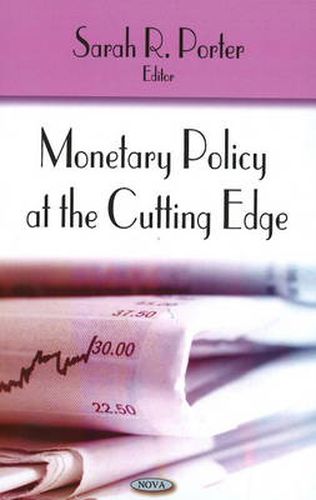Monetary Policy at the Cutting Edge

Monetary Policy at the Cutting Edge
Monetary policy can be defined as any policy relating to the supply of money. Since the agency concerned with the supply of money is the nation’s central bank, the Federal Reserve, monetary policy can also be defined in terms of the directives, policies, statements, and actions of the Federal Reserve, particularly those from its Board of Governors that have an effect on national spending. The nation’s financial press and markets pay particular attention to the pronouncements of the chairman of the Board of Governors, the nation’s central banker. The reason for this attention is that monetary policy can have important effects on aggregate demand and through it on real Gross Domestic Product (GDP), unemployment, real foreign exchange rates, real interest rates, the composition of output, etc. It is paradoxical that these important effects, to the extent that they occur, are essentially only short run in nature. Over the longer run, the major effect of monetary policy is on the rate of inflation. Thus, while a more rapid rate of money growth may for a time stimulate the economy, leading to a more rapid rate of real GDP growth and a lower unemployment rate, over the longer run, these changes are undone and the economy is left with a higher rate of inflation. In some societies where high rates of inflation are endemic, more rapid rates of money growth fail to exercise any stimulating effect and are almost immediately translated into higher rates of inflation. Traditionally, two means have been used to measure the posture of monetary policy. Since monetary policy involves the Federal Reserve’s contribution to aggregate demand or money spending, it would be logical to examine the growth rate of the money supply. A growing money supply is important for the subsequent growth in money spending or aggregate demand. Defining the supply of money has not been easy. For the United States, three different collections of assets have been defined as money and labelled M1, M2, and M3. Unfortunately, over the period 1990-2007, these aggregates have not been consistently linked to money spending and, consequently, they are not the major focus of monetary policy. Rather, the Federal Reserve executes monetary policy by setting a target for an overnight interest rate called the federal funds rate. Low or falling rates are usually taken as a sign of monetary ease; high or rising rates usually indicate monetary tightness. Changes in the federal funds rates affect primarily short-term interest rates, and through these changes, money spending. Between January 3, 2001, and June 25, 2003, the target rate for federal funds was reduced to 1% from 61/2%. This policy was reversed beginning June 30, 2004. In 17 equal increments ending on June 29, 2006, the target rate was raised to 51/4%. No additional changes were made until September 18, 2007 when, in a series of seven moves, the target was reduced to 2% on April 30. These reductions were designed to ease credit market conditions and stimulate spending.
This item is not currently in-stock. It can be ordered online and is expected to ship in approx 4 weeks
Our stock data is updated periodically, and availability may change throughout the day for in-demand items. Please call the relevant shop for the most current stock information. Prices are subject to change without notice.
Sign in or become a Readings Member to add this title to a wishlist.


